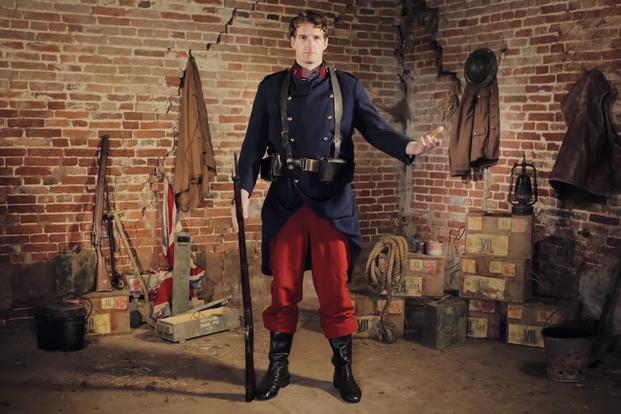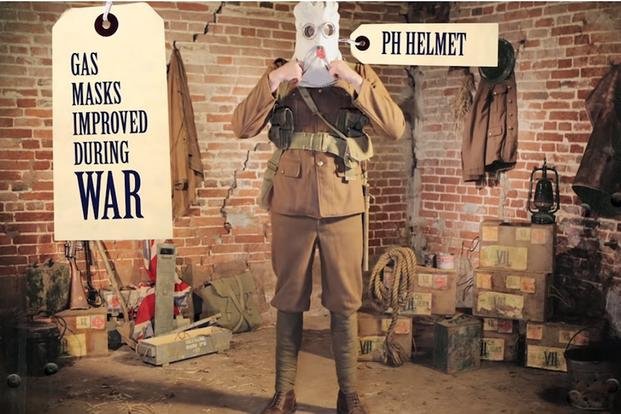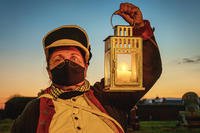When World War I broke out in 1914, European armies rushed to war with the armies they had, not the armies they wanted to have. Some soldiers, lucky enough to serve in forces that had recently seen combat, were well equipped for an industrial war with camouflaged uniforms and modern weaponry.
Others shipped out wearing parade gear.
Historian Dan Snow made a video with the BBC that shows the common kit of British, French, and German forces at the start of the war. These are the items most of the forces wore during the chaotic first days of the war, from the Battle of Liege to the Taxis of the Marne to the first diggings of the trenches that would characterize World War I.
Germany, which had fought six wars of varying sizes from 1899 to 1914, was well served with modern weapons and uniforms, though Snow points out that their pointed helmets provided easy targets for enemy marksmen. Britain, similarly, had fought in the Boxer Rebellion and the Venezuelan Crisis, and their troops were wearing brown uniforms and modern kit.
The British even carried multiple bandages into battle, allowing them to quickly provide first aid for themselves and others on the battlefield.

France, though, had been involved in only the Boxer Rebellion in the years leading up to the war, and their troops started the conflict in bright red pants and deep blue jackets, colors which likely added to the stunning number of French dead in the Battle of the Frontiers. France's bloodiest day came during that battle as 27,000 soldiers died on August 22.
They were still wearing those uniforms when Germany nearly captured Paris and the French command was forced to commandeer taxis to ferry troops to the fighting during the Battle of the Marne. The French troops likely looked dashing riding the taxis to the fighting, but they still would've been better served with colors that provided camouflage.

As the war progressed, the uniforms changed. France was the first to add helmets, and they adopted a uniform cloth that would incorporate red, white, and blue threads. A lack of red dye — it was manufactured in Germany — made the resulting fabric light blue instead of purplish-brown.
Britain followed suit on helmets, using them to replace the cloth caps used at the start of the war. Germany began the wear with leather helmets, but the leather was typically imported from South America, and the British blockade forced the military to turn to other materials. In 1916, steel was adopted, a better material for stopping the shrapnel from exploding artillery and mortar shells.

When the U.S. joined the war, it changed the color and simplified the cuts of its uniforms, allowing them to be produced more quickly and without the olive-drab dye which had been purchased from Germany until 1917. It also adopted British steel helmets as producing them in America ran into manufacturing slowdowns.
World War I was also when the U.S. adopted division shoulder-sleeve insignias, the unit patches nearly all soldiers wear today. Only three divisions — the 81st, 5th, and 26th divisions — made wide use of them during the war. Most other units only adopted them for general use after the armistice.
MORE POSTS FROM WE ARE THE MIGHTY:
9 interesting reasons behind US military uniforms
This is what happened when a newspaper called John Wayne a 'fraud'
Why the 'Good Cookie' isn't a guaranteed medal
We Are The Mighty (WATM) celebrates service with stories that inspire. WATM is made in Hollywood by veterans. It's military life presented like never before. Check it out at We Are the Mighty.




